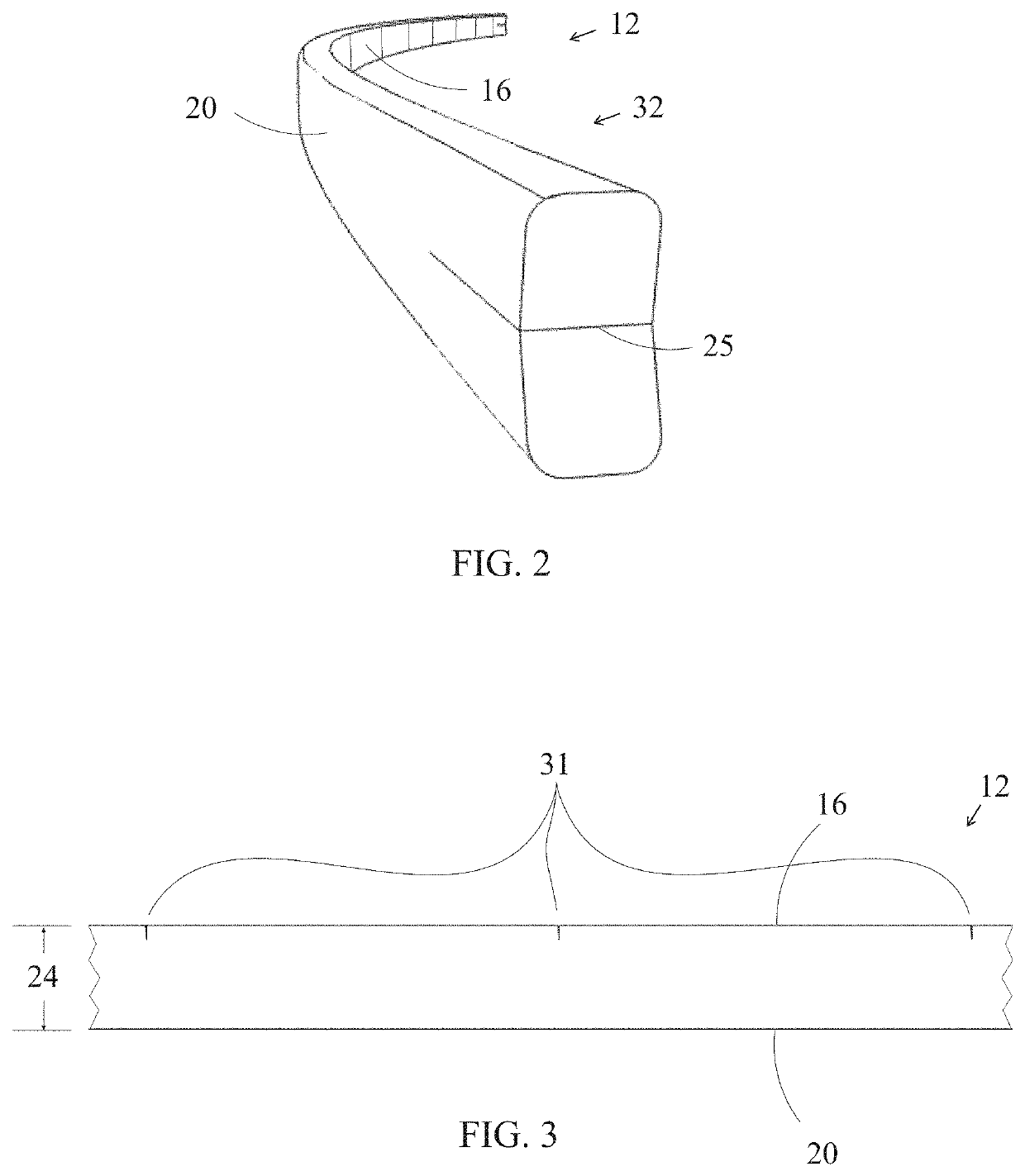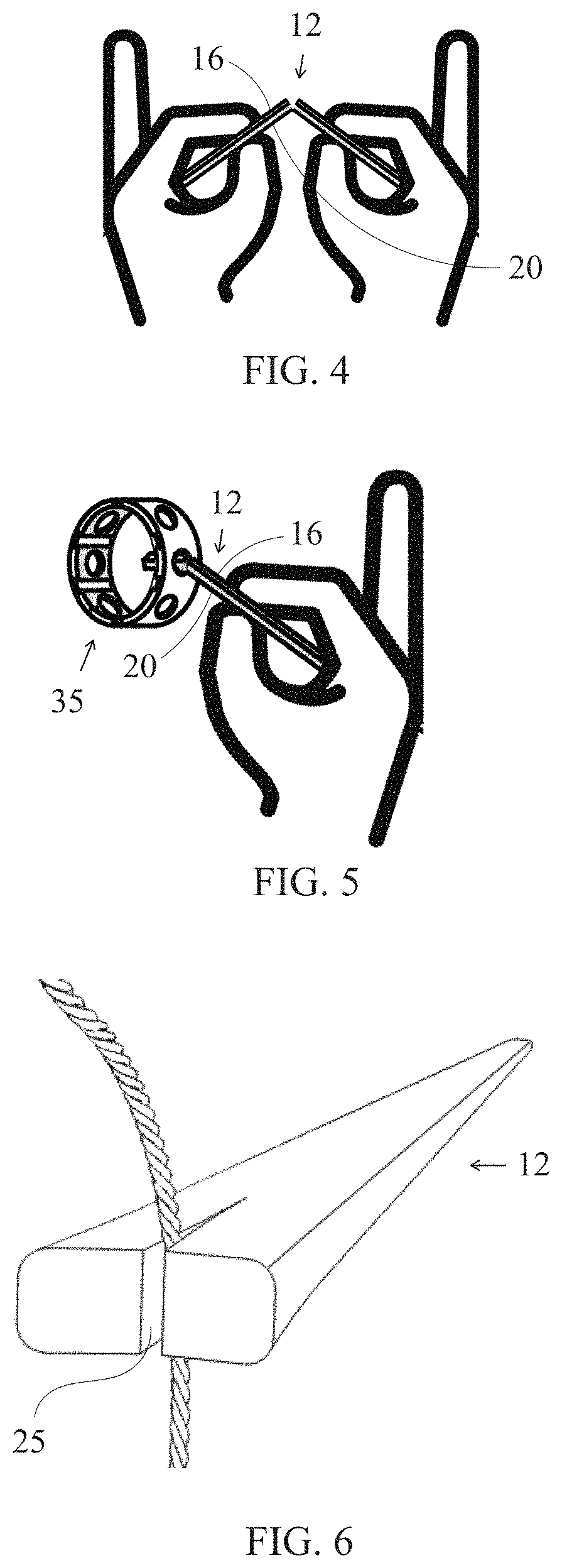Construction toy with interconnecting strips and rings
a construction toy and interconnection technology, applied in the field of construction toys, can solve the problems of complex interplay between these criteria, relates to the choices available, and related limitations arise from the fixed length of the strut elements, and achieves the effect of relative eas
- Summary
- Abstract
- Description
- Claims
- Application Information
AI Technical Summary
Benefits of technology
Problems solved by technology
Method used
Image
Examples
Embodiment Construction
[0110]The construction toy of the invention includes numerous components that may be assembled in various ways to achieve desired combinations, as discussed below. The construction toy of the invention is designated generally 10. Example assemblies constructed of the components of construction toy 10 may be seen in FIGS. 33-48.
[0111]Referring now to FIGS. 1A through 1C, construction toy 10 includes a plurality of strips, including first strip 12 and second strip 14. Each of strips 12 and 14 have a top surface 16 having width 18, and a bottom surface 20 having width 18. First edge 22 has thickness 24. Second edge 26 also has thickness 24. First strip 12 and second strip 14 have a length 28, four longitudinal edges 23 a first end 29 and a second end 30. In one embodiment, first end 29 and second end 30 are forked and an incision 25 bisecting each end extends from the vertex of the fork a distance, e.g., 1% to 5% or 4% to 2% or approximately 3%, down the length of the strip. Top surfac...
PUM
 Login to View More
Login to View More Abstract
Description
Claims
Application Information
 Login to View More
Login to View More - R&D
- Intellectual Property
- Life Sciences
- Materials
- Tech Scout
- Unparalleled Data Quality
- Higher Quality Content
- 60% Fewer Hallucinations
Browse by: Latest US Patents, China's latest patents, Technical Efficacy Thesaurus, Application Domain, Technology Topic, Popular Technical Reports.
© 2025 PatSnap. All rights reserved.Legal|Privacy policy|Modern Slavery Act Transparency Statement|Sitemap|About US| Contact US: help@patsnap.com



